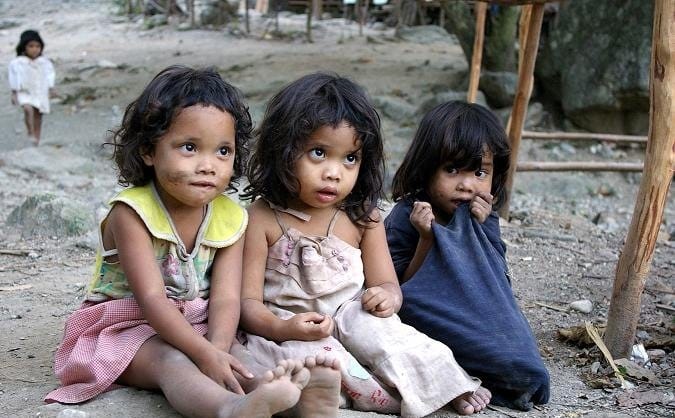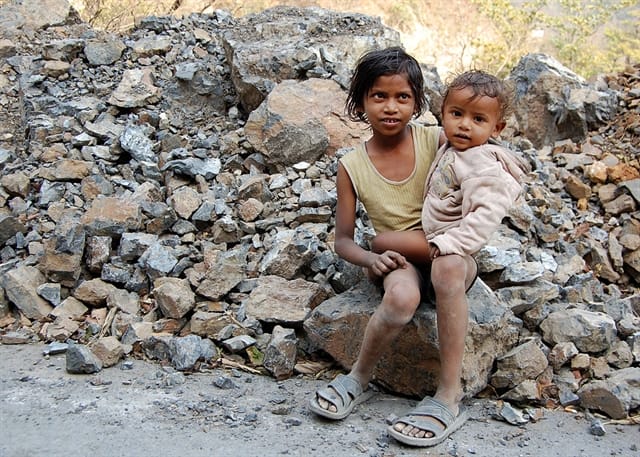How do we know right from wrong? Is it something we have to be taught? Or are right and wrong obvious even to small children? Whether it is innate or taught, how can it be so soon forgotten? How can issues as widespread as hunger and poverty be forgotten?
Two questions: one easy, one tougher
Professor Singer’s book, The Life You Can Save: Acting Now to End World Poverty, may not conclusively answer these questions for academic economists and philosophers, but the question seems pretty easy for most infants to five-year olds without university training. According to Paul Bloom of the Infant Cognition Center at Yale University, “some sense of good and evil seems to be bred in the bone.” So let’s go back to basics.
In his book, Professor Singer poses a question—just a hypothetical—and he knows how you will answer it. Then, after he asks a second question, which so clearly follows from the first, you’re flummoxed and forced to think about why the next question seems so hard. Which is just what a good professor does.
Here’s Professor Singer’s setup in the first question: A toddler flails in a small fountain or wading pond, no parents in sight, sure to drown unless helped. It’s not a far-fetched philosophical hypothetical. In the United States, drowning is a leading cause of infant death.
So, you are on your way to work, in your dress shoes or work boots, not a minute to spare. A toddler is face down in the fountain. Do you save your shoes or work boots, and get to work on time? Or do you step over the fountain’s two-foot threshold, soaking your shoes or boots, in order to rescue the toddler—risking the ire of your boss, and perhaps the tyranny of the time clock if you “punch in” for a living? For us, it’s no sacrifice at all. Most folks agree that they would and should step in, pull the child out of the water, and save a life.
Then Professor Singer points out that about 18,000 children die every day from hunger, measles, malaria, diarrhea, and other conditions that—as Professor Singer puts it—“either don’t exist in developed nations, or, if they do, are almost never fatal” (The Life You Can Save, p. 5). That’s 750 children every hour, 12 children a minute. These children die from diseases we don’t even have to think about, and so we don’t think about them. But these children do die. And with each child’s death a human life, the pride of a parent, and the hopes of a family are lost.
And so Professor Singer’s next question (the tough one) is: if you’d wade into the pool to save a child, at a small cost, is it right to let children (or even one child) starve or die, for an equally small cost? His answer, with which most five-year olds would agree, is this: “When we spend our surplus on concerts or fashionable shoes, or fine dining and good wines… we are doing something wrong” (TLYCS, p. 18).
What stops us from saving a child?
So why don’t we wade into those pools of hunger, measles, and malaria? Why don’t we save these children? Probably because we’re not there, the threat is not immediate—and perhaps because there’s no pat on the back, no camera crew to document our deeds. Also, perhaps, we are less likely to act precisely because we don’t suffer from ruined shoes or work boots, or being late to work. There is no immediate manifestation of either the good accomplished, or the sacrifice made. There is nothing that you or anyone else can observe to witness or remember your resolve or righteousness. Perhaps you’re thinking, “What good is a good deed if no one is looking?” Or, “Will what I do really make a difference?”
The good is in the doing, regardless of who watches. Any effort that saves a life is heroic, even if no one witnesses it in the moment. It does not have to involve physical effort, but it does require a commitment—and less commitment than soaked shoes or being late to work. The commitment can be silent, as quiet as a small check clearing your bank account every month.
The loss of a child is incalculable. Even if our drowning child may never grow up to be the next Nobel Prize winner, or the next Gandhi, we can all agree that every human life is worth saving. What if our drowning child just grows up to be a great kid—just like your kid?
The right question to ask is this: what does it cost you to save a child? Perhaps, as a starting point, a couple hundred dollars. If you’d wade into the fountain at the expense of your shoes or work boots, and being late to work, what are you waiting for?
If you’re waiting for some guidance on effective charities – good folks that get your dollars working fast and effectively on the ground – you can start by reviewing this list of non-profits:
If you’re waiting for a reason to give—even though it seems like there are a lot of reasons not to—here are ten reasons why you should consider giving:
If you’re still not convinced, but you have a child—or a niece or a nephew, or a great kid next door—think about it this way: If you would wade into a fountain to save them, here’s your opportunity.
Look into their eyes. What are you waiting for? Wade in.

(Source: Poor Children Around the World, The Poverty Image (28633746), fanpop.com)



